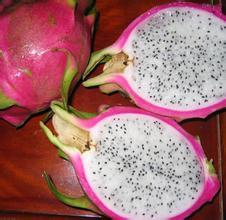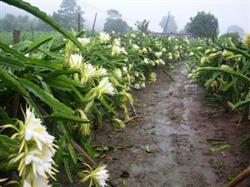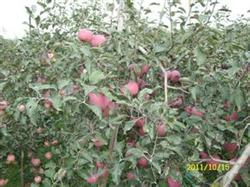Cultivation and Management of Dragon Fruit

Cultivation and management of dragon fruit is a tropical plant, like light and shade, heat and drought, fertilizer and barren, its stem affixed to the rock can also grow, the plant is extremely resistant to wind, as long as the bracket is strong enough to resist typhoon, planting 400 trees in the middle of 667 square meters, one 20 cm square in the middle of every 4 plants, and a cement column 2 meters high can be used as a support. Pitaya can adapt to all kinds of soil, but it is better to use neutral soil and weakly acidic soil with more humus, water and fertilizer. In order to make it grow vigorously after planting, it is necessary to apply more disinfection, sterilization and fermentation of human, livestock and poultry manure organic fertilizer, calcium magnesium phosphate fertilizer and compound fertilizer at seedling stage, and the amount is determined according to plant size. The dragon fruit is growing and rapidly in a warm, humid and sunny environment. It should be watered more when cultivated in the open field in spring and summer to keep its roots in a state of exuberant growth, and should be drained in time in overcast and rainy weather so as not to cause stem and flesh rot caused by bacteria. The dragon fruit is tolerant to 0 ℃ low temperature and 40 ℃ high temperature. In order to ensure its perennial growth and multiple fruit, the suitable temperature is 20 ℃ 30 ℃ as far as possible. The greenhouse must be built for planting in the north, and the night temperature in winter is not lower than 8 ℃. The plastic film can not be taken off in summer, but it must be ventilated. The fire dragon orchard does not need to be ploughed, and the weeds can be cut off in time. The dragon fruit has a thick waxy layer, smooth appearance, no bagging, and saves labor and time. The dragon fruit generally has no pest occurrence, occasionally there are nematodes in the roots and red spiders in the stems and leaves, which can be prevented and controlled in time. Fire dragon fruit from flowering to fruit ripening, about 30 days, when the fruit from green to red, the fruit slightly fragrant, bright, can be harvested. In field management, 12Mel began to blossom and bear fruit 14 months after planting, and it could blossom 15 times a year. The fruit plate of Huolong fruit was from April to November. The fruit was ripe for 40 days after flowering, and the weight of single fruit was 500g-1000g. It produced more than 20 fruits per column in the second year after planting, and entered the full fruit stage in the third year. If the management level is higher, the per unit yield can reach 2500kg/667 square meters. The main points of high-yield cultivation are as follows: 1. Thin fertilizer is applied frequently: due to the long harvest period of fruit, organic fertilizer should be re-applied every year, and nitrogen, phosphorus and potassium compound fertilizer should be applied evenly for a long time. Potassium and magnesium fertilizers should be added during flowering and fruiting period to promote sugar accumulation and improve fruit quality. Keep the soil moist during the fruiting period, and the tree plate is covered with grass or mushroom residue. When the weather is dry, 3mer will be irrigated once a day. 2. Pick the heart: when the branch grows to 1.3-1.4m long, it promotes the branch and allows the branch to droop naturally. 3. Interplanting and artificial pollination: when planting pitaya, it is necessary to plant about 10% of the white meat type of pitaya. Mutual pollination among varieties can significantly improve the seed setting rate. In case of overcast and rainy weather, artificial pollination should be carried out. Pollination can be used to apply pollen directly to the stigma of female flowers before the flowers bloom in the evening or before the flowers are closed in the morning. 4. Pruning branches: cut off the fruiting branches after harvest every year and let them sprout again to ensure the yield in the coming year. 5. Pest control: pitaya has few diseases and insect pests, and is easy to be harmed by snails and ants in seedling stage, which can be controlled by insecticides; in the season of high temperature and humidity, it is easy to infect diseases, partial branch necrosis and mildew spots, and can be controlled by strychnine, strong copper oxide and so on. the effect is good.
- Prev

Development potential and cultivation advantages of Dragon Fruit
Pitaya is a plant of the genus Cactus, which is native to the tropical desert of Central America and is a typical tropical plant. Also known as Qinglongguo and Honglongguo, it was introduced from Nanyang to Taiwan and then improved by Taiwan to our Xianju Farm. The dragon fruit is named because its fleshy scales look like Jiaolong Wailin. She is smooth and clean.
- Next

How to make young apple trees bear fruit early
In the current production, some orchards, soil conditions are better, fertilizer and water are more sufficient, but the planting density is too large, and the management after planting cannot keep up, especially the correct use of pruning techniques to promote early flowering results, resulting in over-dense populations, coverage rates of 90%, or even 110%, crown handover rates greater than 20%, and mu branches.
Related
- Moge, come on! The staff of the peasant association in the producing area of cantaloupe were frightened when the crowd gathered.
- Causes and Solutions of low Fruit setting rate of Apple
- Symptoms and control measures of passion fruit virus disease
- Fruit growing lesson: how do apple orchards keep high yields?
- Can you build orchards in the mountains? What are the pros and cons?
- How to manage the coloring period of Crisson grape?
- This paper introduces the processing technology of two kinds of fig products.
- How much is a month for retired teachers in rural areas by 2020?
- How can strawberry planting increase sugar content? We should pay attention to management in many aspects.
- What are the cultivation techniques on how to improve the yield of golden fruit?

